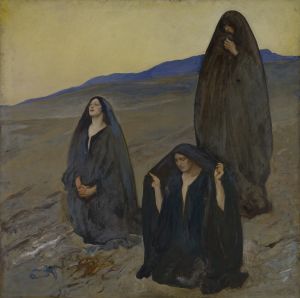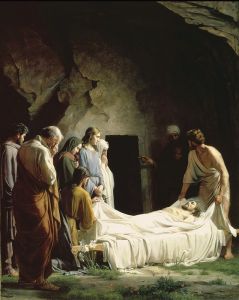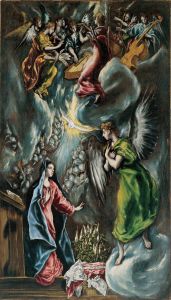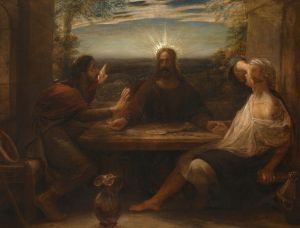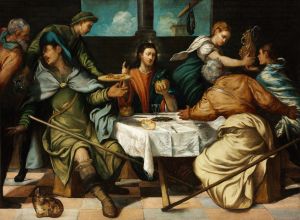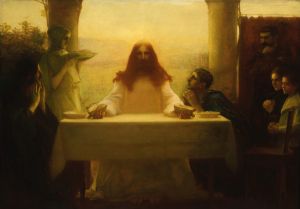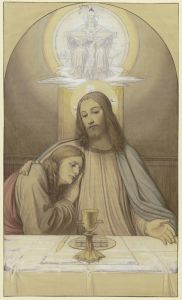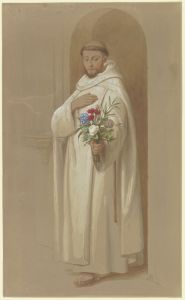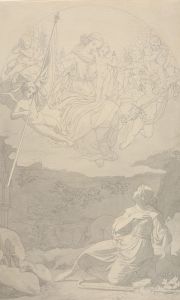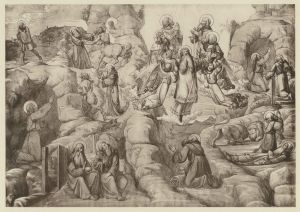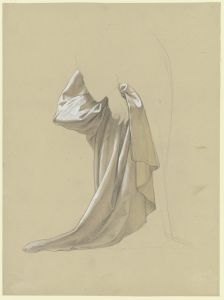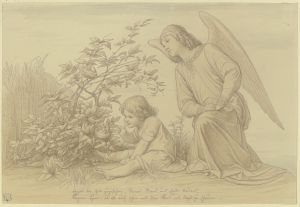
Nikodemus und Joseph von Arimathia vor dem Grab des Herrn, sich die Hand reichend
A hand-painted replica of Eduard von Steinle’s masterpiece Nikodemus und Joseph von Arimathia vor dem Grab des Herrn, sich die Hand reichend, meticulously crafted by professional artists to capture the true essence of the original. Each piece is created with museum-quality canvas and rare mineral pigments, carefully painted by experienced artists with delicate brushstrokes and rich, layered colors to perfectly recreate the texture of the original artwork. Unlike machine-printed reproductions, this hand-painted version brings the painting to life, infused with the artist’s emotions and skill in every stroke. Whether for personal collection or home decoration, it instantly elevates the artistic atmosphere of any space.
Nikodemus und Joseph von Arimathia vor dem Grab des Herrn, sich die Hand reichend is a painting by the German artist Eduard von Steinle. Steinle, born in 1810 in Vienna, was a prominent figure in the Nazarene movement, which sought to revive honesty and spirituality in Christian art. He was known for his religious and historical paintings, often characterized by their detailed and expressive style.
The painting depicts a biblical scene involving Nicodemus and Joseph of Arimathea, two figures mentioned in the New Testament. According to the Gospels, Joseph of Arimathea was a wealthy man and a secret disciple of Jesus, who asked Pontius Pilate for permission to take Jesus' body after the crucifixion. Nicodemus, a Pharisee and a member of the Jewish ruling council who had previously visited Jesus at night to seek his teachings, assisted Joseph in the burial process.
In Nikodemus und Joseph von Arimathia vor dem Grab des Herrn, sich die Hand reichend, Steinle captures the moment when these two men, united in their devotion and respect for Jesus, are seen standing before the tomb. The title translates to "Nicodemus and Joseph of Arimathea before the Lord's Tomb, shaking hands," indicating a gesture of mutual support and solidarity in their shared task.
The painting is notable for its emotional depth and the way it conveys the solemnity of the moment. Steinle's use of light and shadow enhances the somber mood, highlighting the figures against the backdrop of the tomb. The detailed rendering of their expressions and gestures reflects the artist's skill in portraying human emotion and interaction.
Eduard von Steinle was a member of the Nazarene movement, which was founded in the early 19th century by a group of German and Austrian artists who sought to return to the purity and spirituality of early Christian and Renaissance art. The Nazarenes were known for their meticulous attention to detail and their emphasis on religious themes, which is evident in Steinle's work.
Throughout his career, Steinle produced numerous religious paintings, frescoes, and illustrations, many of which were commissioned for churches and other religious institutions. His works are characterized by their clarity, precision, and deep spiritual resonance. Steinle's influence extended beyond his own work, as he also taught and mentored other artists, contributing to the spread of Nazarene ideals.
Nikodemus und Joseph von Arimathia vor dem Grab des Herrn, sich die Hand reichend is a testament to Steinle's dedication to religious art and his ability to convey profound spiritual messages through his paintings. The work remains an important example of 19th-century religious art and continues to be appreciated for its artistic and historical significance.





